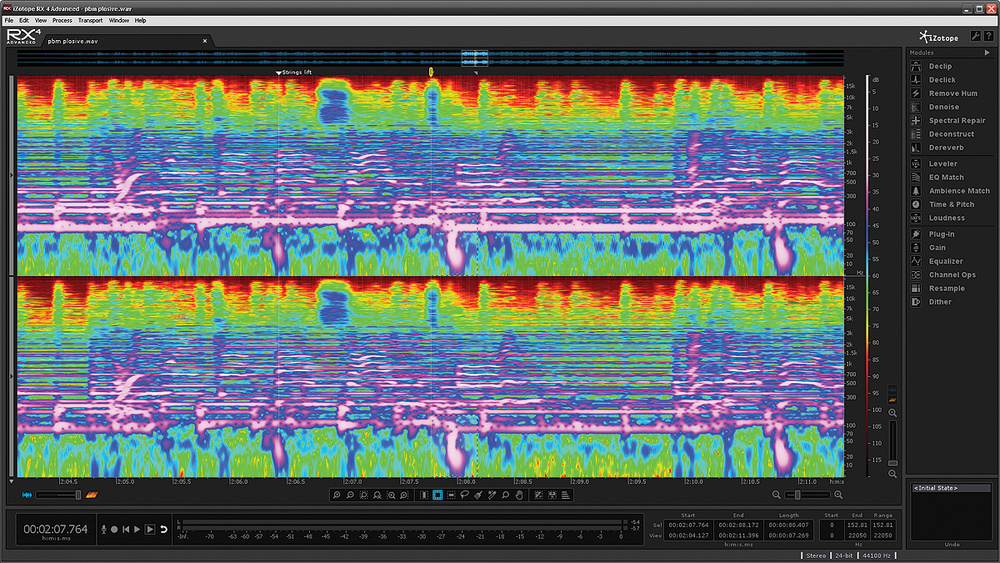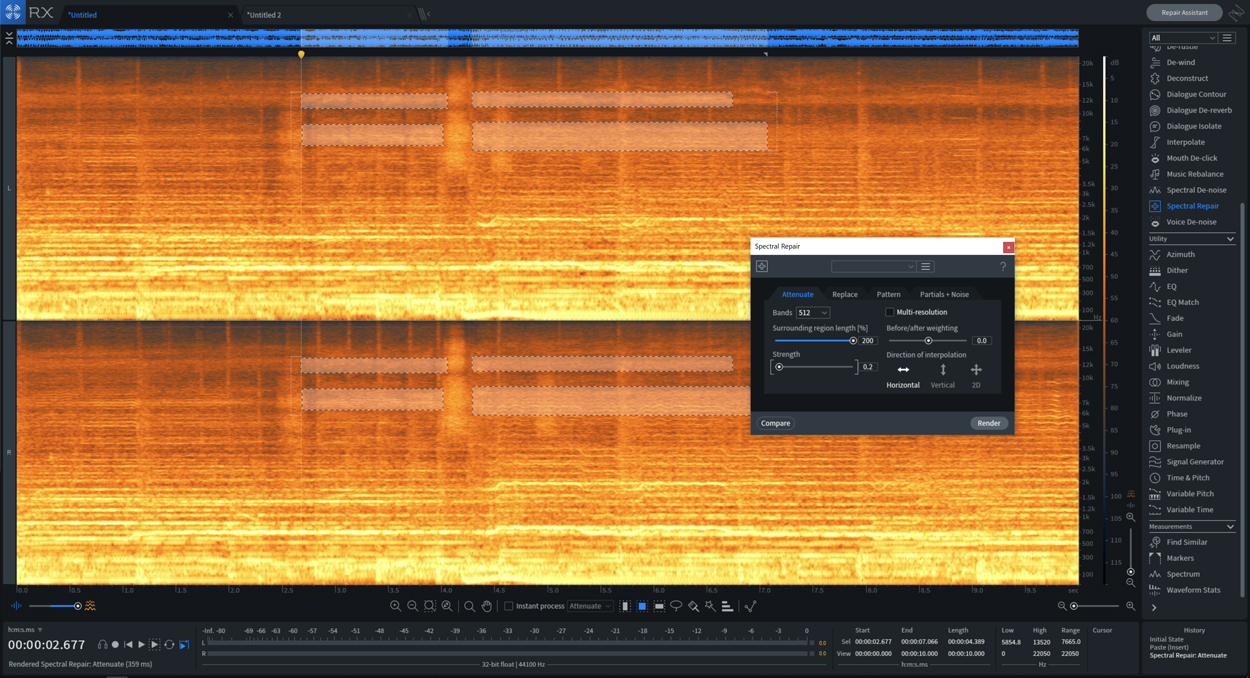

- Sound Quality
- Ease of use
- Features
- Bang for buck
- Overall:
Download iZotope RX for free. IZotope RX™ 2 is the most complete audio repair toolkit on the market, enabling you to remove noise, hiss, buzz and hum, eliminate clicks and crackle, restore clipped audio, visually select and suppress unwanted sounds, resynthesize missing audio and much more. A 30 day trial period will start when you first open the RX 6 Audio Editor or RX 6 plug-ins. After the 30 day trial period has expired, RX 6 will enter demo mode. To disable Trial or Demo mode, you must authorize the product with a valid serial number.
Izotope Rx 7 Audio Editor Advanced
We've all had them. Otherwise perfect live recordings ruined by a car horn or a guitarist that can't admit his amp really does have an internal ground loop. Vocalists that sound awesome when they sing and evoke thoughts of dying when they breath. That one chorus where the drummer played a little too loud and clipped on the way into conversion.
So we search for tools to get rid of these issues. iZotope RX is one such tool and it does these jobs beautifully, removing hums, clicks, pops, clipping, and noise. The sound quality is excellent, and the plugins are easy to use. In fact, iZotope RX is one of those products that you use first out of dire need, but start using for more and more of your workflow because it is so flexible and so powerful.
But the story doesn't end there. RX also comes with a standalone editor that is nothing short of the PhotoShop of the audio world. (Yes, you can see and lasso audio you want to edit, then process away to your heart's content!) It goes so far as to say that whenever possible, the third-party Audio Editor I specify in my DAW is always iZotope RX.
Using an excellent and highly configurable spectrographic display, issues are easy to see, select, and remove. For critical projects I edit all of my vocal tracks and all of my live tracks with RX, as it allows me to easily find and correct issues with the audio. Let's take a quick look at the possibilities:
- Is that vocalist too breathy? It's easy to see and control breaths with RX
- Did your live recording contain feedback? It's easy to see and remove feedback and other unwanted noise
- Are the drum tones you got from another engineer too flabby with too much bleed? Or perhaps the drummer prefers to let each drum ring out naturally but it doesn't fit the style? With RX you can tighten tones and get everything to fit nicely
For those that are interested, RX can be demoed easily by visiting iZotope's site: iZotope RX - Complete Audio Restoration: Declipping, Declicker, Hum Removal, Denoiser, Spectral Repair, Restore, Remaster, Download
Given my experience with RX I give it:
- 10 for Sound Quality, as the results are excellent
- 10 for Ease of Use, as the interface is straightforward and excellent
- 9 for Features, only because I think a multi-track version would be a significant improvement for editing live recordings where unwanted sound is recorded on multiple microphones. Otherwise, the Features are stellar, especially with the Advanced version
- 10 for Bang for Buck, as the basic RX package is far better than it's plugin-based competition with the inclusion of the standalone editor, and with the Advanced version it competes well with Cedar units that cost A LOT more
Izotope Rx 7 Free Download
Steps in RX Audio Editor:
- Open the audio file in the RX Audio Editor or send it via RX Connect.
- Select the region with the hum present and open the De-hum module [Shift +3].
- Click Learn to determine the noise profile of the Hum, or choose a preset from the menu if it is a traditional 50 or 60 cycle hum. For this example, we’ll choose the preset 60 Hz Wide Reduce.
- Click Process to apply the De-Hum process.
- You’ll notice this removes the fundamental, but a noticeable buzz still remains. For this, we’ll open the De-noise module [Shift+4].
- Click the Spectral tab, and select Manual mode.
- Now select a passage in the audio that contains just the isolated buzz without the dialogue and click Learn to extract the noise profile of the buzz.
- Now select the entire region where the buzz is present.
- Check the box marked Output Noise Only and click Preview. Raise the Reduction slider until you begin to hear tonal components of the voice and then reduce the value slightly from there. For this example, we found a reduction setting of 16.5 worked well.
- Uncheck the Output Noise Only box.
- Click Preview again to check the quality of the processing while listening to the dialogue.
- When you have the desired settings dialed in, click Process.